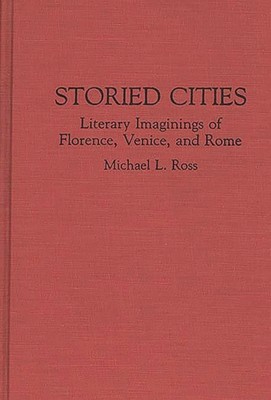
- We will send in 10–14 business days.
- Author: Michael Ross
- Publisher: Praeger
- ISBN-10: 0313287171
- ISBN-13: 9780313287176
- Format: 16.3 x 24.3 x 3 cm, kieti viršeliai
- Language: English
- SAVE -10% with code: EXTRA
Reviews
Description
The fabled cities of Italy--Florence, Venice, and Rome--have each acquired a distinctive tradition of literary representation involving characteristic, recurrent motifs and symbolic signatures. A wealth of writing on each is examined in fiction and poetry of the nineteenth and twentieth centuries mainly by British and American authors. Included are works by Robert Browning on Florence and Rome; George Eliot, W.D. Howells, E.M. Forster, and D.H. Lawrence on Florence; Charles Dickens, Thomas Mann, L.P. Hartley, and Anthony Hecht on Venice; Arthur Hugh Clough, Nathaniel Hawthorne, Edith Wharton, and Aldous Huxley on Rome; and Henry James and Bernard Malamud on Florence, Venice, and Rome.
The analysis points to Florence frequently being depicted in terms of binary oppositions, including Hebraism versus Hellenism, past versus present, stasis versus movement, and light versus darkness. Venetian narratives are commonly infused with motifs relating to dream and unreality, obsession, voyeurism, isolation, melancholia, and death. History is a controlling metaphor for Roman fiction and poetry, combined with the motif of change and, especially, fall from innocence to experience. Ross shows how writers have self-consciously built on the literary conventions set earlier and anticipates that these cities will remain natural loci for continued post-modernist experiment. In a wider theoretical framework, he examines this writing identified with place for the light it sheds on the issue of the importance of setting in literature.
EXTRA 10 % discount with code: EXTRA
The promotion ends in 22d.20:50:10
The discount code is valid when purchasing from 10 €. Discounts do not stack.
- Author: Michael Ross
- Publisher: Praeger
- ISBN-10: 0313287171
- ISBN-13: 9780313287176
- Format: 16.3 x 24.3 x 3 cm, kieti viršeliai
- Language: English English
The fabled cities of Italy--Florence, Venice, and Rome--have each acquired a distinctive tradition of literary representation involving characteristic, recurrent motifs and symbolic signatures. A wealth of writing on each is examined in fiction and poetry of the nineteenth and twentieth centuries mainly by British and American authors. Included are works by Robert Browning on Florence and Rome; George Eliot, W.D. Howells, E.M. Forster, and D.H. Lawrence on Florence; Charles Dickens, Thomas Mann, L.P. Hartley, and Anthony Hecht on Venice; Arthur Hugh Clough, Nathaniel Hawthorne, Edith Wharton, and Aldous Huxley on Rome; and Henry James and Bernard Malamud on Florence, Venice, and Rome.
The analysis points to Florence frequently being depicted in terms of binary oppositions, including Hebraism versus Hellenism, past versus present, stasis versus movement, and light versus darkness. Venetian narratives are commonly infused with motifs relating to dream and unreality, obsession, voyeurism, isolation, melancholia, and death. History is a controlling metaphor for Roman fiction and poetry, combined with the motif of change and, especially, fall from innocence to experience. Ross shows how writers have self-consciously built on the literary conventions set earlier and anticipates that these cities will remain natural loci for continued post-modernist experiment. In a wider theoretical framework, he examines this writing identified with place for the light it sheds on the issue of the importance of setting in literature.


Reviews